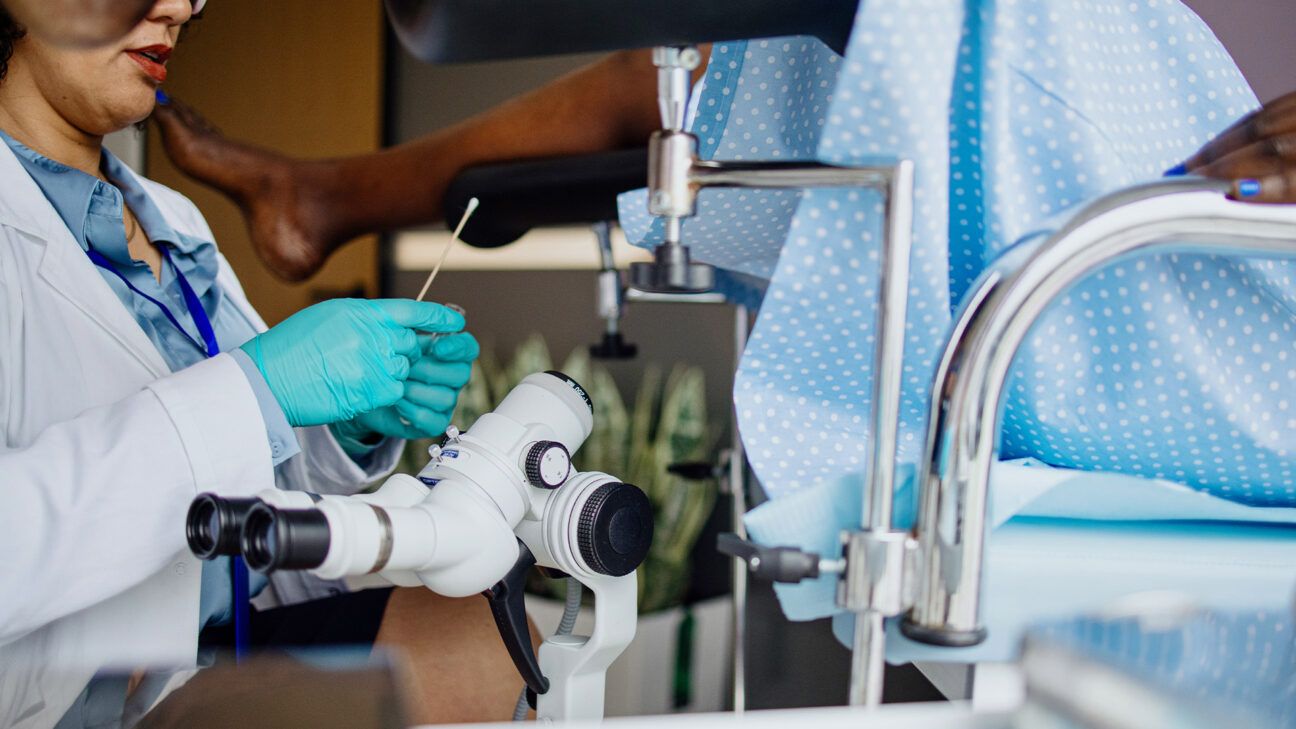Cervical Cancer Screening Includes New Self-Collection Method for HPV Testing

- The U.S. Preventive Services Task Force released new draft guidelines for cervical cancer screening, including recommendations for three screening methods.
- For the first time, the new recommendations also include self-collection for HPV samples, which the Task Force states could help reduce barriers to care and improve screening access.
- Cervical cancer death rates in the U.S. are declining due to regular screening, but Black and Hispanic women still face disproportionately high risks.
Cervical cancer continues to be a leading cause of disease-related death globally.
In the United States, where regular screening for cervical cancer is widely available, mortality rates have fallen by 70% since the 1950s.
Vaccination against HPV for children and adults is also highly encouraged.
Most cervical cancer cases are caused by human papillomavirus (HPV), a sexually transmitted infection (STI). Current guidelines for cervical cancer screening recommend HPV testing every 5 years for females ages 30 to 65.
For younger females ages 21 to 29, a Pap test every three years continues to be the gold standard for cervical cancer screening.
On December 10, however, the U.S. Preventive Services Task Force (UPSTF) released a new draft recommendation for cervical cancer screening that includes three screening methods — HPV tests, Pap tests (cytology), and co-testing (Pap and HPV) — to help detect early signs of the disease.
For the first time, UPSTF has also included self-collected HPV tests in its cervical cancer screening guidelines starting at age 30. Females can now collect their own samples using a swab, which UPSTF states yields just as accurate results as when a sample is collected by a clinician.
UPSTF anticipates self-collection will increase screening rates among those who experience discomfort during traditional screening methods.
Moreover, self-collection provides an alternative for females who face barriers to care and are under-screened, particularly among Black and Hispanic women, who face disproportionately high cervical cancer risks.
“Most cases of cervical cancer are in women who have not been regularly screened or appropriately treated after an abnormal test result,” Task Force chair Wanda Nicholson, MD, MPH, MBA, said in a statement.
“That’s why it’s so important that women get screened regularly, so cancer can be prevented or caught early when it’s treatable.”
The new UPSTF recommendations offer options for those assigned female at birth. They can work with their healthcare team to choose a screening method that best suits their personal health.
“Protecting choice in screening methods is crucial to ensuring that OB-GYNs and other healthcare professionals can continue to provide the lifesaving tests women need,” said Jessica Shepherd, MD, board certified OB-GYN at Sanctum Med + Wellness in Dallas, Texas, and Chief Medical Officer at Hers.
Healthline spoke with Shepherd to learn about screening methods and prevention of cervical cancer.
This interview has been edited and condensed for clarity and length.
Is HPV testing more effective than Pap testing for cervical cancer?
Shepherd: The USPSTF cervical cancer screening draft guidelines maintain access to all current screening methods, and the Task Force noted that all three screening methods — HPV tests, Pap tests, and co-testing — are effective and recommended.
The patient experience remains the same no matter the screening strategy used, and for women 30+, co-testing provides more information to inform care decisions.
Additionally, the Task Force noted that current evidence continues to show that getting a Pap test every three years is the best screening approach for women ages 21 to 29.
How often should you get screened for cervical cancer?
Shepherd: The USPSTF recommends women begin cervical cancer screenings at age 21 with the Pap test every 3 years. Pap testing is the most effective method for these younger women because most HPV infections in this age range resolve on their own.
Once patients are 30+, the Task Force recommends screening every 5 years with Pap+HPV together (co-testing), every 3 years with the Pap test, or every 5 years with HPV testing alone.
How does the self-collection method for HPV samples work?
Shepherd: While some view HPV self-collection as a potential way to increase access, Food and Drug Administration (FDA) approvals for HPV self-collection allow for sample collection to take place only in a healthcare setting when a cervical sample by a clinician cannot otherwise be obtained.
No matter what testing method is used, patients still need to come in for a screening appointment.
The FDA noted when they approved HPV self-collection that if women who are regularly screened switch to self-collection, it could result in “potential missed cervical disease cases that could have otherwise been detected and prevented using the current standard of care.”
Currently, there are no FDA-approved HPV tests for home collection in the U.S.
Ultimately, increasing screening participation and improving cervical cancer care will require a multi-faceted range of solutions, which is why I believe so strongly in the importance of the patient-provider relationship to discuss these factors and find the right solution for each woman.
Why do high cervical cancer risks persist among Black and Hispanic women?
Shepherd: Black women are more than twice as likely to die of cervical cancer than white women. Because of delays in screening, Black women are more likely to be diagnosed with advanced cervical cancer than any other racial group.
We also know that Hispanic women are 40% more likely to be diagnosed with cervical cancer compared to white women and 26% more likely to die from the disease.
These concerning trends occur due to several factors, including a lack of access to insurance and appropriate treatment.
We often see that many women believe they will experience financial barriers to screening appointment costs and potential follow-up care or treatment. This underscores the importance of screening guidelines that preserve access to all options for women.
Changes that would restrict options would contribute to higher rates of disease, worsening existing inequities in care and outcomes for these groups.
What are some ways to reduce the risk of cervical cancer?
Shepherd: Cervical cancer is preventable with regular screening. More than 50% of new cervical cancer cases occur in women who have never been screened or haven’t been screened in the past five years. A focus on improving [HPV] vaccination is also imperative.
Women deserve to feel empowered to take charge of their cervical health. Annual well-woman visits help women stay up to date with essential screenings by their doctor, including Pap tests and co-testing — while also helping patients and doctors build stronger relationships.
Takeaway
For the first time, cervical cancer screening guidelines from the U.S. Preventive Services Task Force include self-collection of HPV samples for females starting at age 30, which could help make screening more accessible.
The Task Force also recommends three screening methods for females ages 21 and up: HPV tests, Pap tests, and co-testing. Females should work with their healthcare team to decide which testing method is best for them.
Cervical cancer is preventable with regular screening. While overall disease-related death rates have fallen in the U.S., Black and Hispanic women continue to face disproportionately high risks.
Cervical Cancer Screening Includes New Self-Collection Method for HPV Testing Read More »




